Clean Air For Schools
Clean Air For Schools
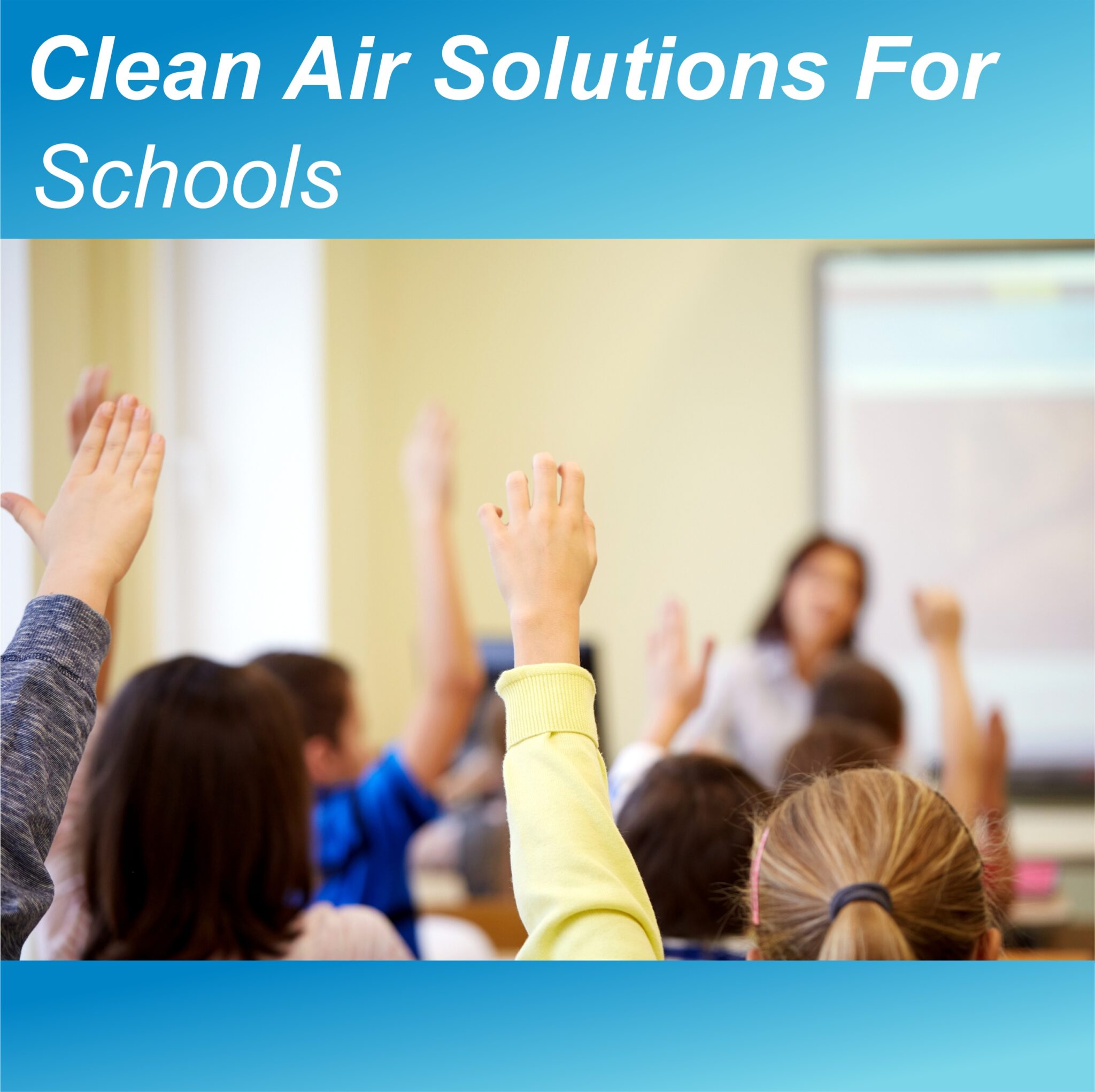
Your Air Quality
According to the EPA we spend nearly 90% of our time indoors; at work, at school and at home. If you are like most people, that means you spend almost all of your time indoors.
Myth: Hand Sanitizer Stops Cold And Flu
Using hand sanitized can help stop the spread of illness that is passed through physical contact,
However, it does very little on its own for the spread of airborne illness like like the cold and flu
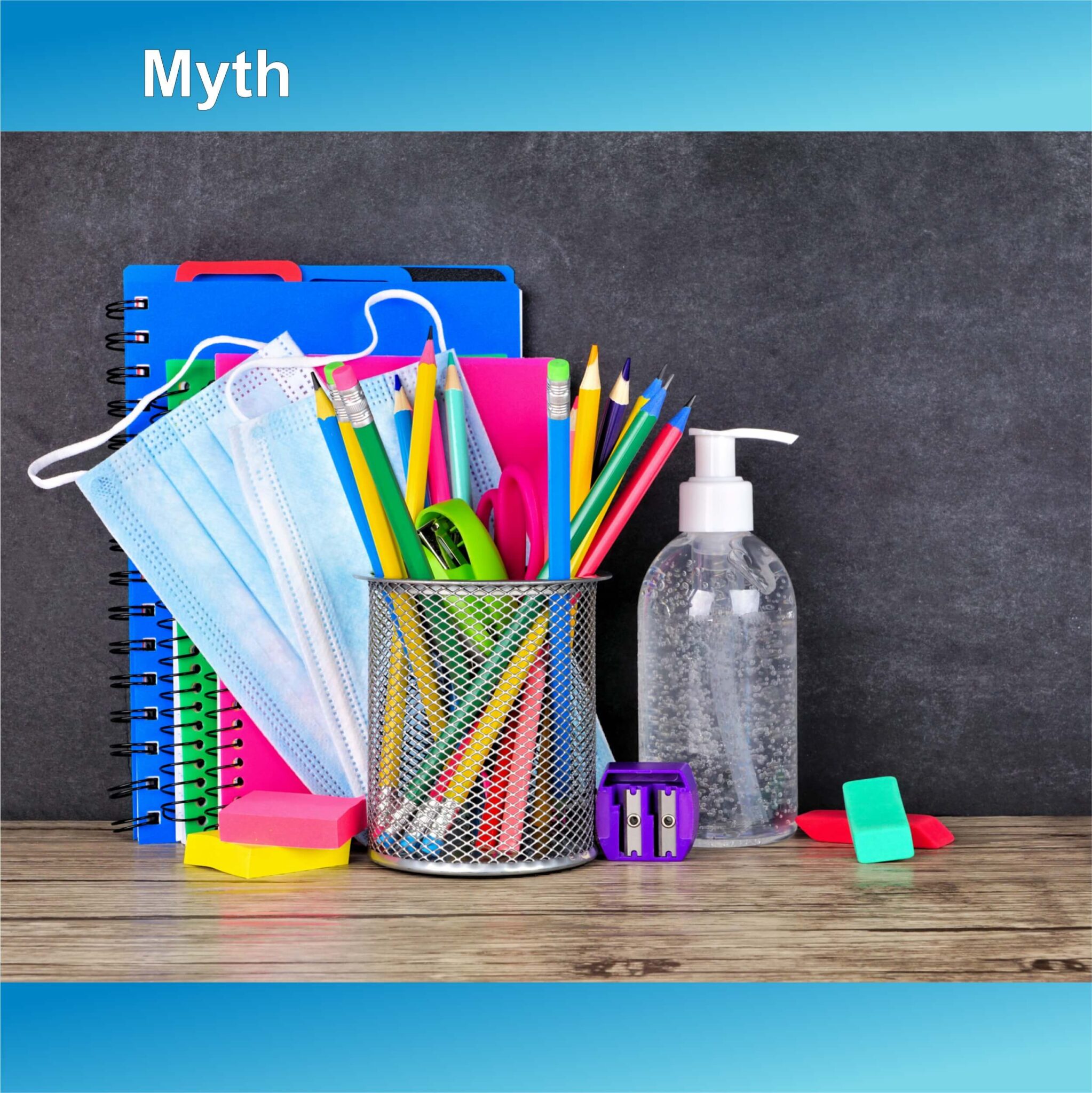
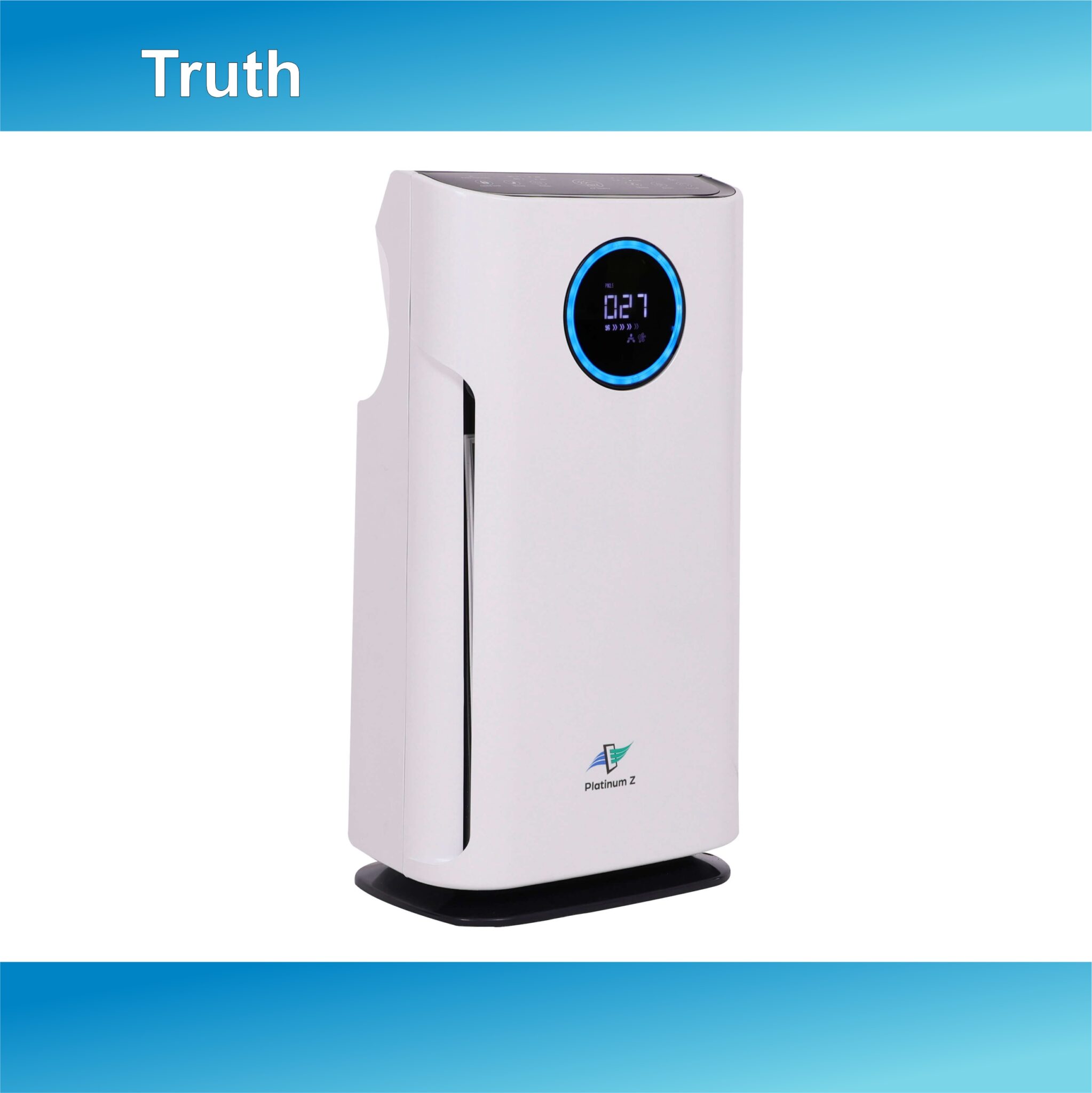
Truth: Cleaning The Air Stops Colds And Flu
The common cold and flu viruses are passed from human to human through airborne exposure to droplet nuclei. Spending long periods of time around others in confined spaces (i.e. at school) increases your chance of infection
An air purifier using UV-C light removes droplet nuclei and the germs/viruses they contain from the air before you breath it.
The Facts
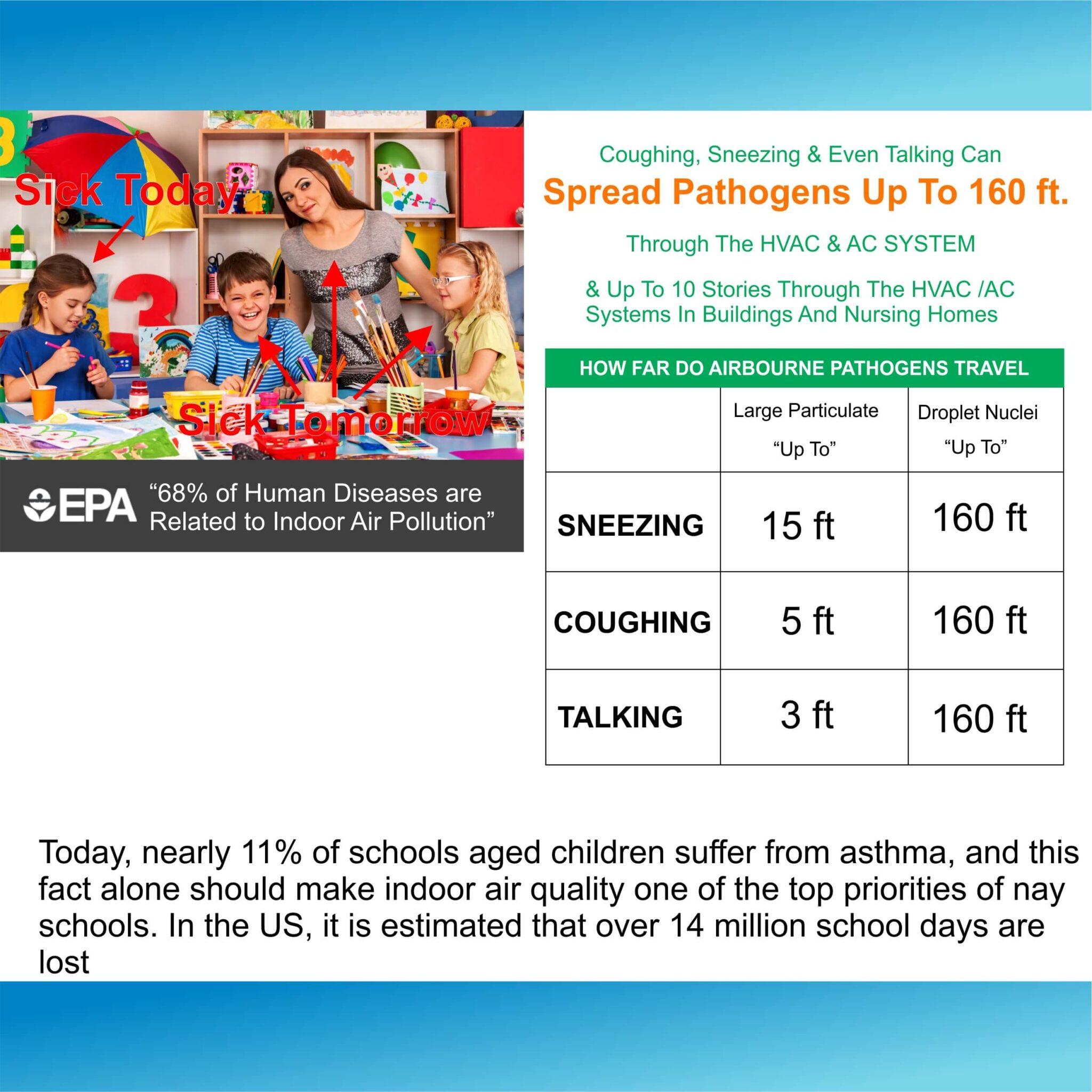
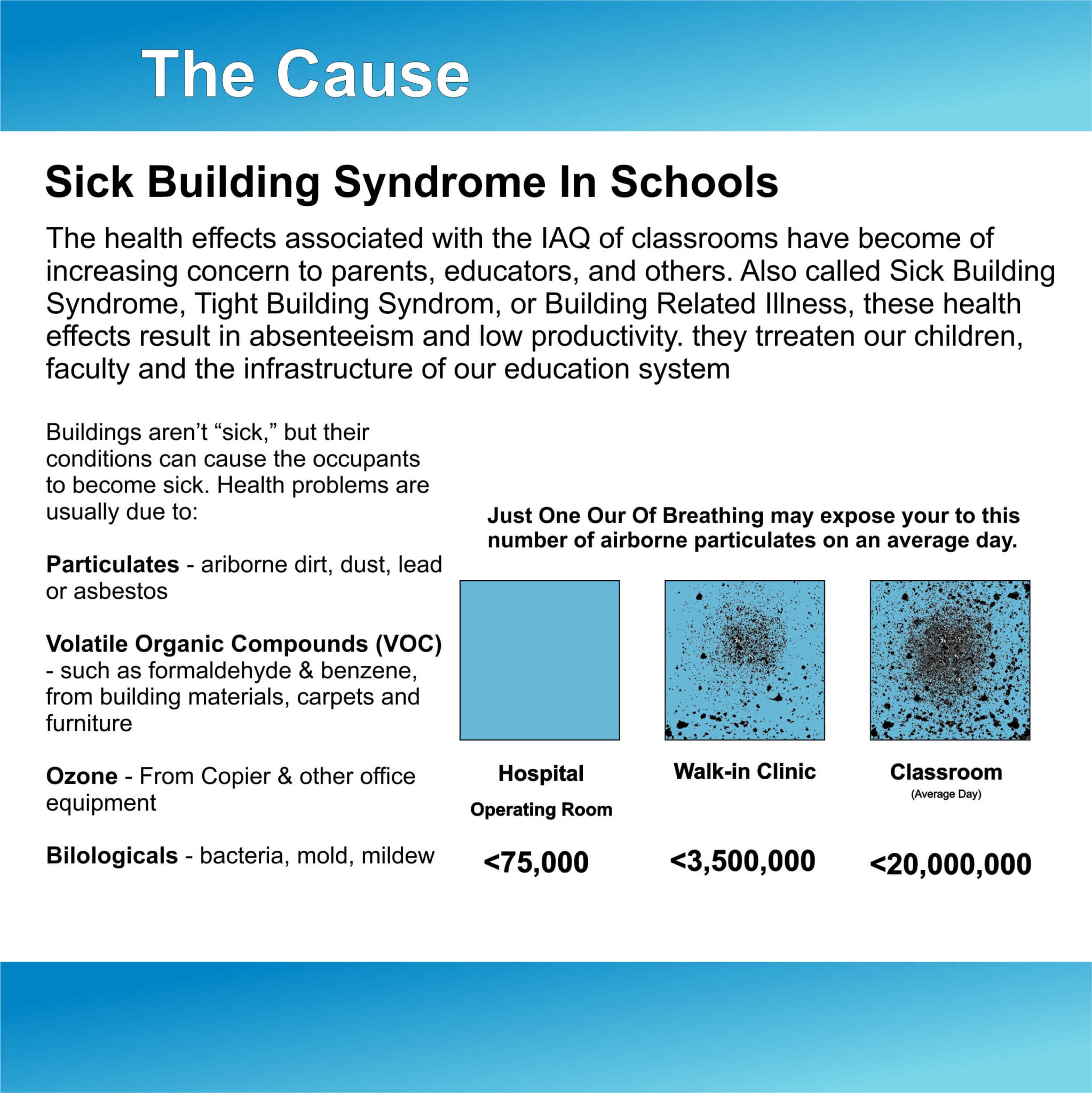
The Cause
Sick building syndrome (SBS) describes a range of symptoms thought to be linked to spending time in a certain building, most often a workplace, but no specific cause can be found. Symptoms of sick building syndrome get worse the longer you’re in a particular building and get better after you leave. The symptoms vary from just having minor discomfort to long term illnesses and in some cases even life threatening conditions. The symptoms can sometimes be caused just by being in a certain area of the building.
Why Clean Air In Schools Is So Important
Click Here To Read More
In schools, the indoor air environment can be highly complex, with students and teachers being exposed to a wide variety of contaminants. Indoor air quality issues generally arise from two major sources – classroom activities, and the building itself.
According to a US federal government report, an estimated 50% of the nation’s schools have problems linked to poor indoor air quality. This is sometimes known as Sick Building Syndrome (SBS). The concentration of contaminants in these buildings, which in some cases have accumulated for years, can severely affect the health of students and faculty.
Even if the school appears to be relatively clean, its occupants can still be exposed to numerous indoor air pollutants from the following:
· Large groups of people in confined spaces for long periods of time (can produce and promote the spread of pathogens such as germs, bacteria, viruses and mold spores)
· Cleaning products (contain dangerous volatile organic compounds)
· Computers, printers, photocopiers and other electrical equipment (can produce ozone)
· Carpets, furniture and paint (can emit chemicals such as formaldehyde)
· Fluorescent lighting (may produce photochemical smog)
· Water-damaged areas (may foster microbial growth such as bacteria and mould)
· Construction activities (may produce fine particulate dust)
· Inadequate or poorly filtered ventilation systems (may emit mould spores and other allergens)
· Inadequate cleaning services (poor vacuuming with ineffective equipment)
At low levels, indoor air pollutants can lead to reduced attention span and lack of concentration among students. More seriously, they can contribute to short and long-term health problems, including headaches, nasal congestion, eye, nose, throat and skin irritation, coughing, sneezing, fatigue, dizziness, nausea, respiratory tract infection and disease, allergic reactions and asthma.
Today, nearly 11% of school aged children suffer from asthma, and this fact alone should make indoor air quality one of the top priorities of any school. In the US, it is estimated that over 14 million school days are lost every year as a direct result of asthma and asthmatic complications.
According to the Environmental Protection Agency (EPA), indoor air quality is not only important for good health, but for economic and legal reasons. In the US, poor indoor air quality has resulted in liability issues and contributed to the closure of numerous schools. Poor indoor air quality has also been shown to accelerate building deterioration. A recent study of an elementary school revealed that over $1.5 million in repairs could have been avoided by simply spending $8,000 on preventive maintenance over a 22 year period.
In addition to building inspection, maintenance and upgrading, one of the most important things a school can do is to look at individual classrooms that might be contributing to poor indoor air quality, for example:
· Machine shops (solvents and machining processes can produce toxic gases and dangerous chemicals)
· Wood shops (can generate large quantities of dust allergens)
· Chemistry and biology labs (formaldehyde and other harmful volatile organic compounds can pose serious health risks)
· Art classes (can expose students to toxic pigments and hazardous solvent fumes)
· Automotive shops (can subject students to carbon monoxide and various other gases)
· Physical Education Department (odours and personal hygiene products can trigger allergic and asthmatic responses)
Whether you are trying to deal with complex air quality issues like airborne contaminants and chemical fumes, or simply trying to create a cleaner and healthier environment, operating air purifiers in critical locations throughout the school and in your portables may be as important to learning as a good curriculum and great teachers.
The Solution
7 stage filtration is much more effective than 3 or 4 stage filtration systems which many products use, because certain pollutants require specific filtration technology to either filter or destroy them. A Platinum Z System uses 7 stages to filter and destroy many harmful pollutants other products cannot such as viruses, germs, bacteria, mold, bio-aerosols chemicals and gases
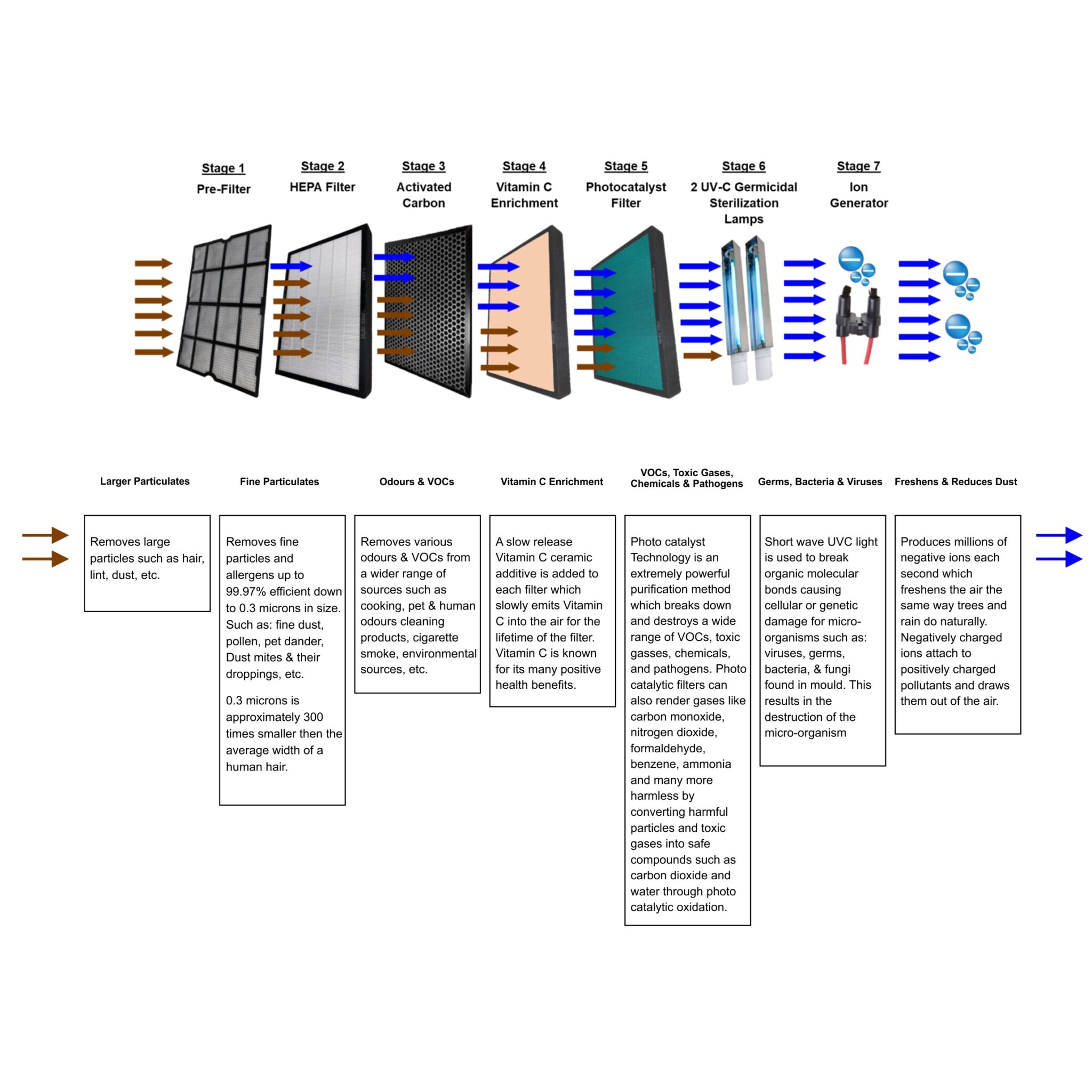
Clean Air For Schools
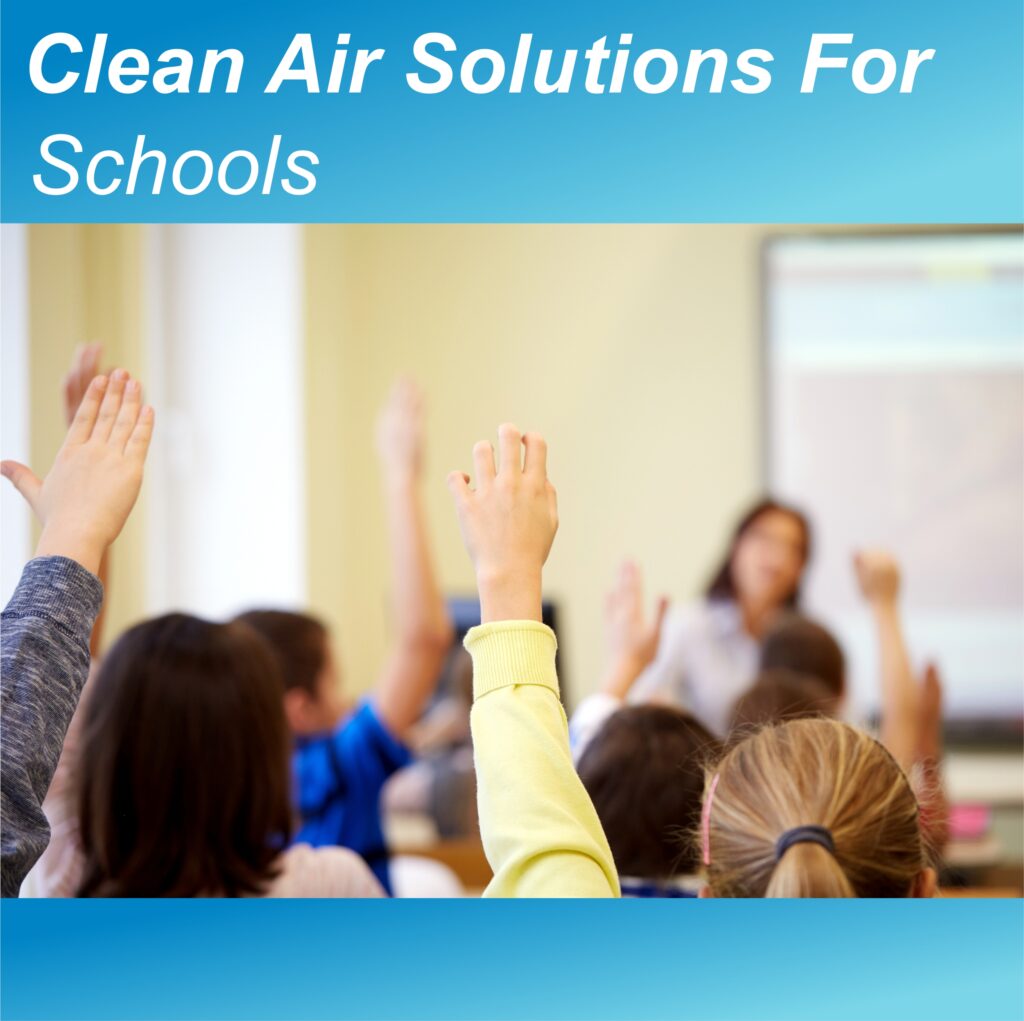
Your Air Quality
According to the EPA we spend nearly 90% of our time indoors; at work, at school and at home. If you are like most people, that means you spend almost all of your time indoors.
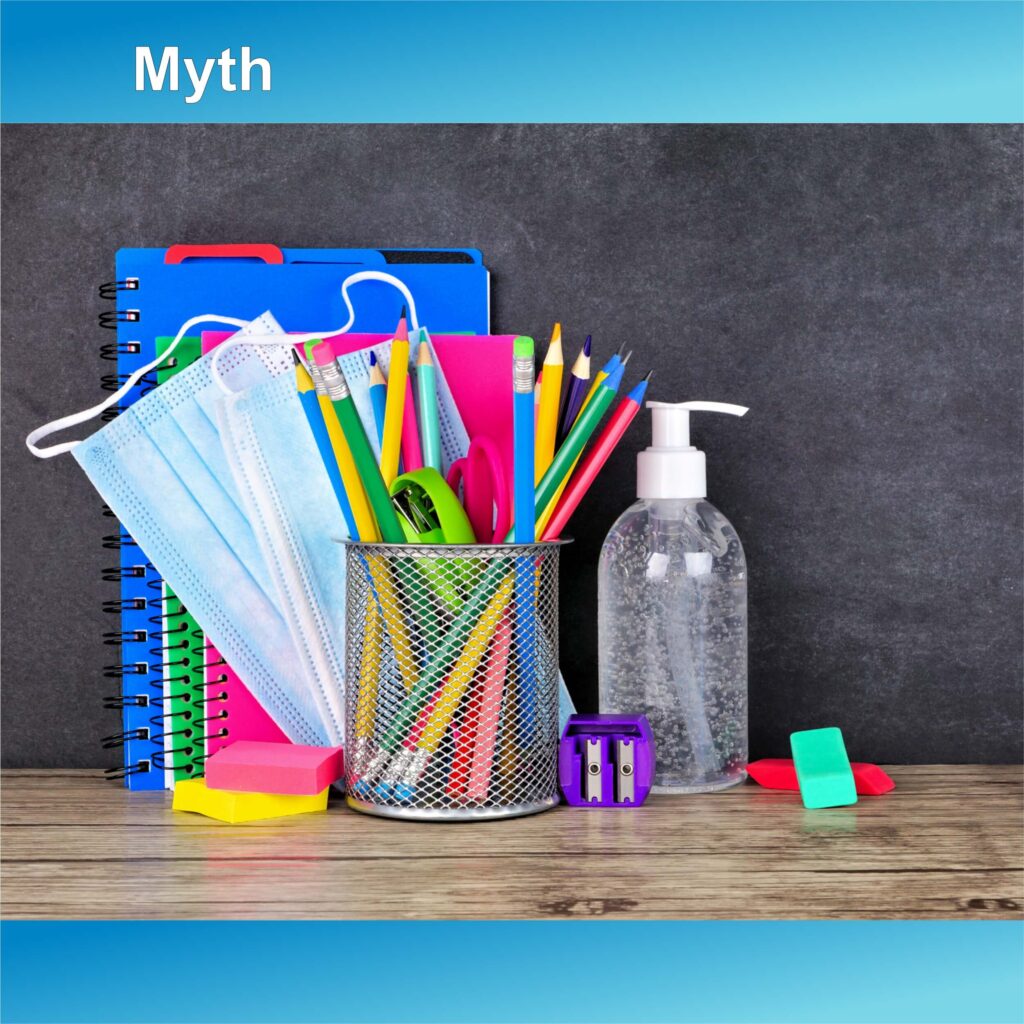
Myth: Hand Sanitizer Stops Cold And Flu
Using hand sanitized can help stop the spread of illness that is passed through physical contact,
However, it does very little on its own for the spread of airborne illness like like the cold and flu
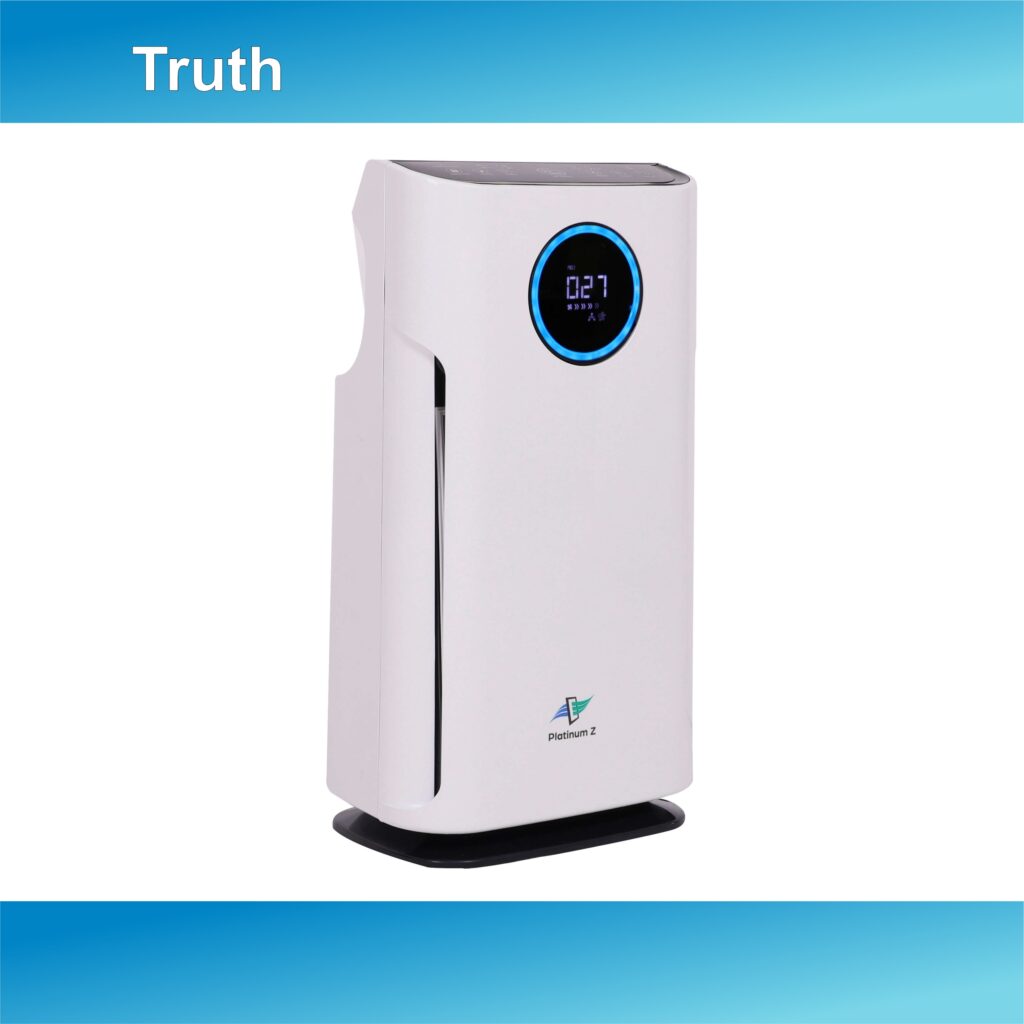
Truth: Cleaning The Air Stops Colds And Flu
The common cold and flu viruses are passed from human to human through airborne exposure to droplet nuclei. Spending long periods of time around others in confined spaces (i.e. at school) increases your chance of infection
An air purifier using UV-C light removes droplet nuclei and the germs/viruses they contain from the air before you breath it.
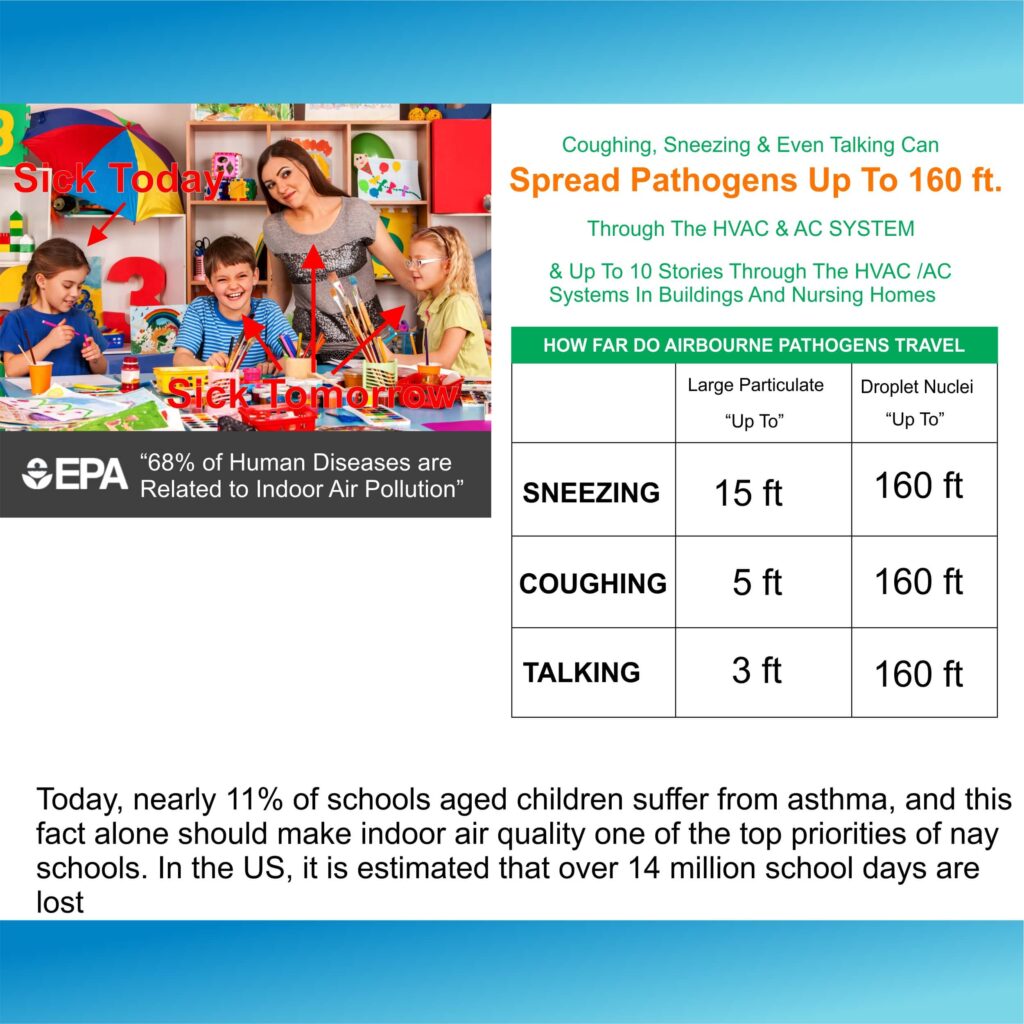
The Facts
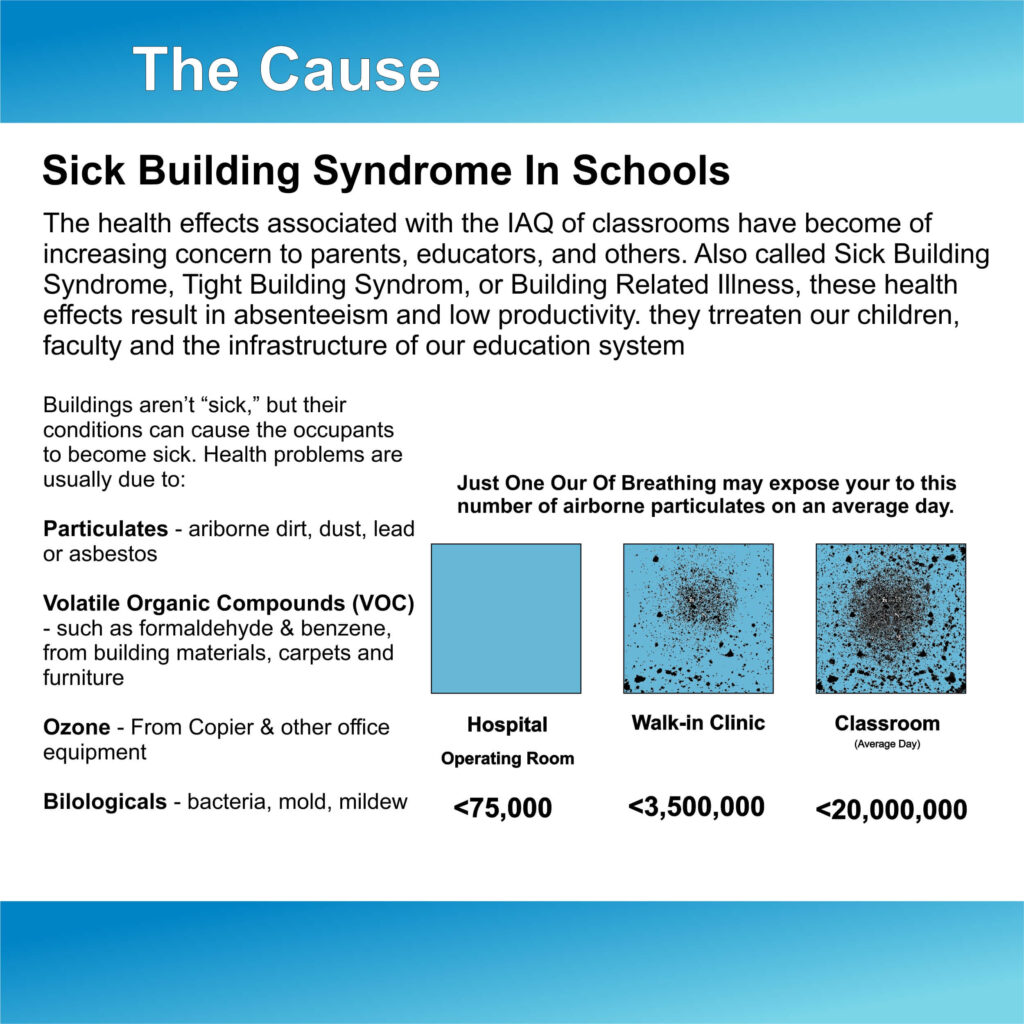
The Cause
Sick building syndrome (SBS) describes a range of symptoms thought to be linked to spending time in a certain building, most often a workplace, but no specific cause can be found. Symptoms of sick building syndrome get worse the longer you’re in a particular building and get better after you leave. The symptoms vary from just having minor discomfort to long term illnesses and in some cases even life threatening conditions. The symptoms can sometimes be caused just by being in a certain area of the building.
Click Here To Read More
In schools, the indoor air environment can be highly complex, with students and teachers being exposed to a wide variety of contaminants. Indoor air quality issues generally arise from two major sources – classroom activities, and the building itself.
According to a US federal government report, an estimated 50% of the nation’s schools have problems linked to poor indoor air quality. This is sometimes known as Sick Building Syndrome (SBS). The concentration of contaminants in these buildings, which in some cases have accumulated for years, can severely affect the health of students and faculty.
Even if the school appears to be relatively clean, its occupants can still be exposed to numerous indoor air pollutants from the following:
· Large groups of people in confined spaces for long periods of time (can produce and promote the spread of pathogens such as germs, bacteria, viruses and mold spores)
· Cleaning products (contain dangerous volatile organic compounds)
· Computers, printers, photocopiers and other electrical equipment (can produce ozone)
· Carpets, furniture and paint (can emit chemicals such as formaldehyde)
· Fluorescent lighting (may produce photochemical smog)
· Water-damaged areas (may foster microbial growth such as bacteria and mould)
· Construction activities (may produce fine particulate dust)
· Inadequate or poorly filtered ventilation systems (may emit mould spores and other allergens)
· Inadequate cleaning services (poor vacuuming with ineffective equipment)
At low levels, indoor air pollutants can lead to reduced attention span and lack of concentration among students. More seriously, they can contribute to short and long-term health problems, including headaches, nasal congestion, eye, nose, throat and skin irritation, coughing, sneezing, fatigue, dizziness, nausea, respiratory tract infection and disease, allergic reactions and asthma.
Today, nearly 11% of school aged children suffer from asthma, and this fact alone should make indoor air quality one of the top priorities of any school. In the US, it is estimated that over 14 million school days are lost every year as a direct result of asthma and asthmatic complications.
According to the Environmental Protection Agency (EPA), indoor air quality is not only important for good health, but for economic and legal reasons. In the US, poor indoor air quality has resulted in liability issues and contributed to the closure of numerous schools. Poor indoor air quality has also been shown to accelerate building deterioration. A recent study of an elementary school revealed that over $1.5 million in repairs could have been avoided by simply spending $8,000 on preventive maintenance over a 22 year period.
In addition to building inspection, maintenance and upgrading, one of the most important things a school can do is to look at individual classrooms that might be contributing to poor indoor air quality, for example:
· Machine shops (solvents and machining processes can produce toxic gases and dangerous chemicals)
· Wood shops (can generate large quantities of dust allergens)
· Chemistry and biology labs (formaldehyde and other harmful volatile organic compounds can pose serious health risks)
· Art classes (can expose students to toxic pigments and hazardous solvent fumes)
· Automotive shops (can subject students to carbon monoxide and various other gases)
· Physical Education Department (odours and personal hygiene products can trigger allergic and asthmatic responses)
Whether you are trying to deal with complex air quality issues like airborne contaminants and chemical fumes, or simply trying to create a cleaner and healthier environment, operating air purifiers in critical locations throughout the school and in your portables may be as important to learning as a good curriculum and great teachers.
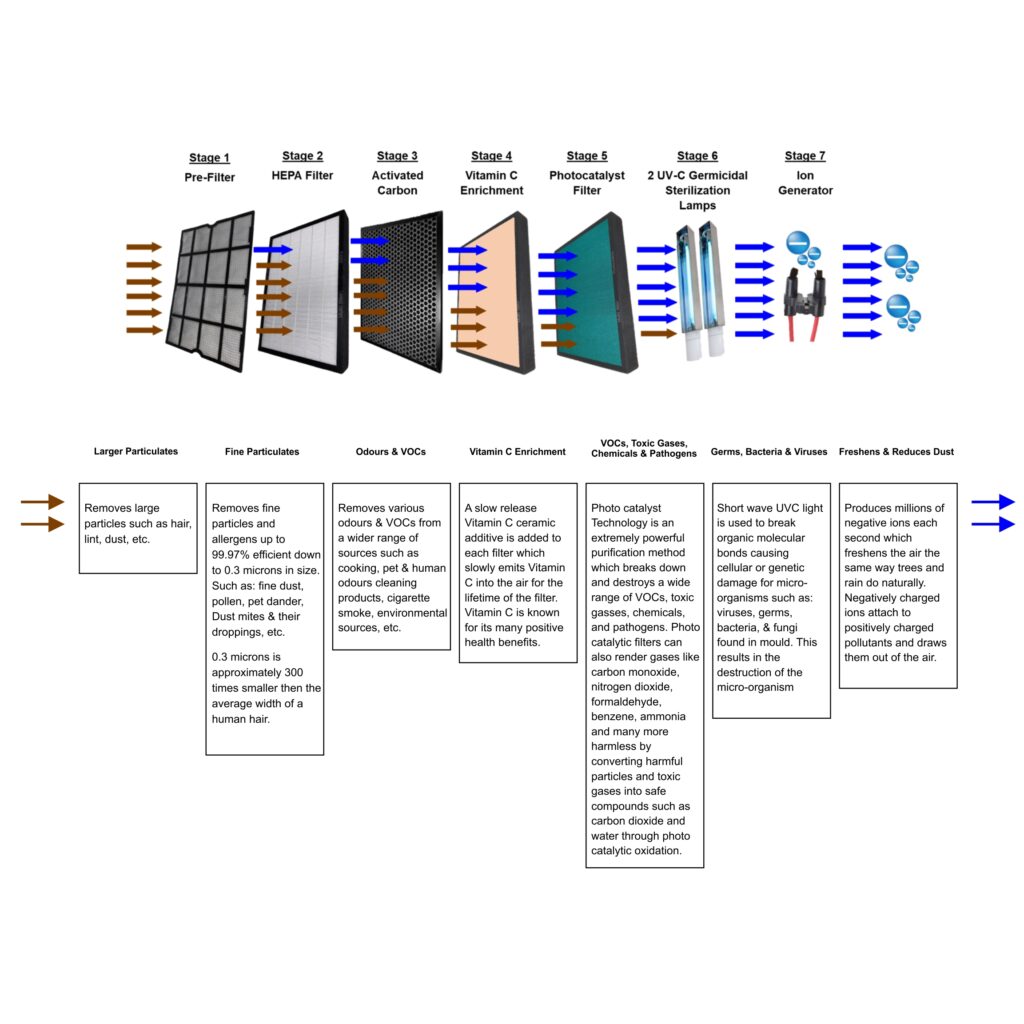
The Solution
7 stage filtration is much more effective than 3 or 4 stage filtration systems which many products use, because certain pollutants require specific filtration technology to either filter or destroy them. A Platinum Z System uses 7 stages to filter and destroy many harmful pollutants other products cannot such as viruses, germs, bacteria, mold, bio-aerosols chemicals and gases
